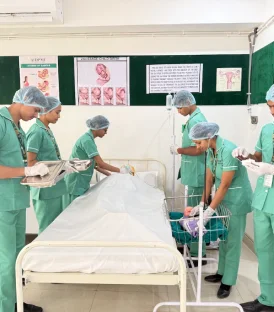August 09, 2024
Imagine an AI system designed to enhance the efficiency and accuracy of pre-hospital care by integrating real-time data from various sources. This system would use advanced algorithms and machine learning to assist paramedics in triaging patients and making critical decisions on the scene.
Key Features:
Real-Time Patient Data Analysis:
1. Smart Sensors: Wearable sensors or devices that gather vital signs (e.g., heart rate, blood pressure, oxygen levels) and environmental data (e.g. location, temperature).
2. Data Aggregation: AI analyses data from these sensors in real time, identifying patterns and abnormalities.
Enhanced Triage Support:
1. Automated Triage Algorithms: Based on the data collected, AI provides recommendations on the urgency of care required. For instance, it can prioritize patients with life-threatening conditions and suggest immediate interventions.
2. Decision Trees: AI generates decision trees to help paramedics choose the most appropriate treatment based on current symptoms and historical data.
Predictive Analytics:
1. Outcome Prediction: AI models predict potential outcomes and complications based on the initial data helping paramedics prepare for possible scenarios.
2. Resource Optimization: AI predicts the required medical resources and equipment ensuring that ambulances are stocked with the necessary supplies for specific emergencies.
Voice-Activated Assistance:
1. Natural Language Processing (NLP): Paramedics can interact with the AI system using voice commands. The AI can provide instant recommendations, instructions, and updates allowing paramedics to focus on patient care.
Integration with Emergency Services:
1. Coordination with Hospitals: The AI system can communicate patient data to receiving hospitals in advance, ensuring that the medical team is prepared upon arrival.
2. Real-Time Updates: The system provides live updates to emergency service centers, improving coordination and response times.
Continuous Learning and Improvement:
1. Machine Learning: The AI continuously learns from new cases and outcomes improving its algorithms and recommendations over time.
2. Feedback Loop: Paramedics can provide feedback on the AI’s performance further refining its accuracy and utility.
Potential Benefits:
- Improved Patient Outcomes: Faster and more accurate triage and decision-making can lead to better patient outcomes and more effective treatment.
- Efficiency Gains: Reduced time spent on triage and decision-making allows paramedics to focus more on patient care.
- Enhanced Coordination: Better communication between paramedics and receiving hospitals ensures more seamless transitions of care.
- This AI-powered system has the potential to revolutionize pre-hospital care making emergency medical services more responsive and effective.
Challenges and Considerations
While AI-driven diagnostics offer immense promise in paramedical, there are challenges and considerations to keep in mind:
Training
Paramedics need proper training to effectively use AI-powered diagnostic tools and interpret their results.
Data Privacy
Patient data privacy and security are paramount. Paramedic services must ensure compliance with data protection regulations.
Ethical Decisions
AI can provide recommendations but the final decision should still be made by a qualified paramedic. Balancing technology with human expertise is essential.
Conclusion:
The shortage of physicians and increasing healthcare costs have created a need for digital solutions to optimize medical resources better. In addition, patient expectations for mobile fast and easy 24/7 access to doctors and health services drive the development of patient-centred solutions. They need to be triaged, diagnosed, and treated remotely or at home without requiring to wait in crowded rooms. AI-driven diagnostics are revolutionizing the field of paramedical by providing rapid and accurate assessments of critical conditions. While these tools offer significant advantages in speed and accuracy, it’s essential to ensure proper training, maintain patient data privacy and make ethical decisions in integrating AI into paramedic practice.

















